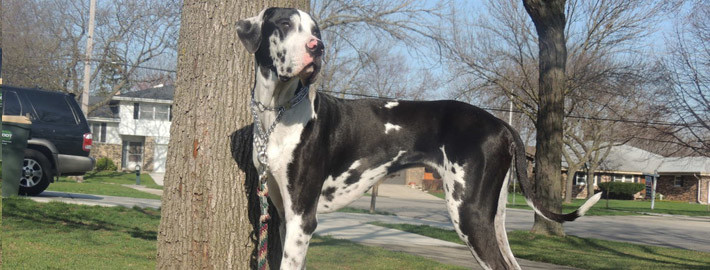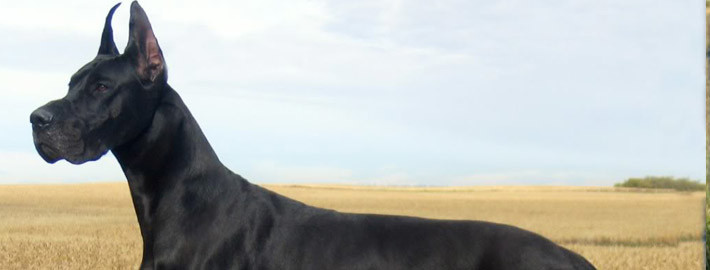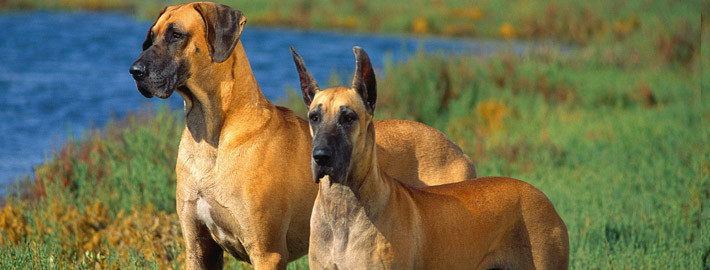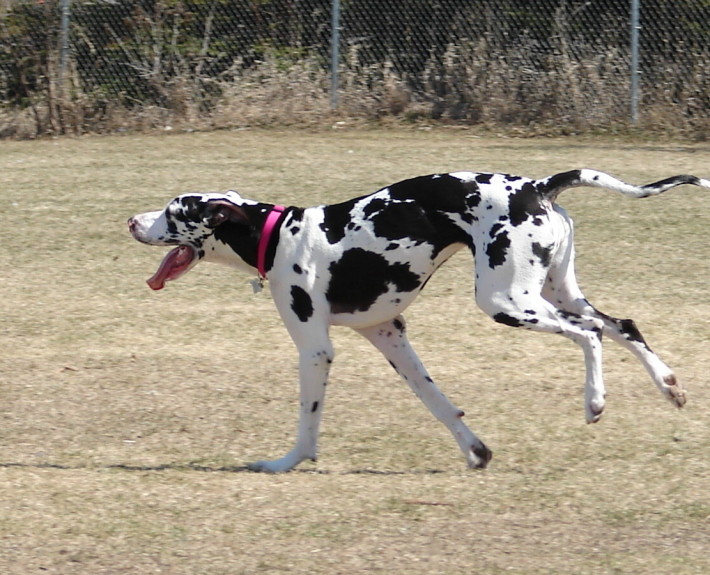What makes the Great Dane Unique?
Known as the “Apollo of Dogs”, the Great Dane is a gentle giant with a long history of serving humankind.
Breed Groups
Page Contents
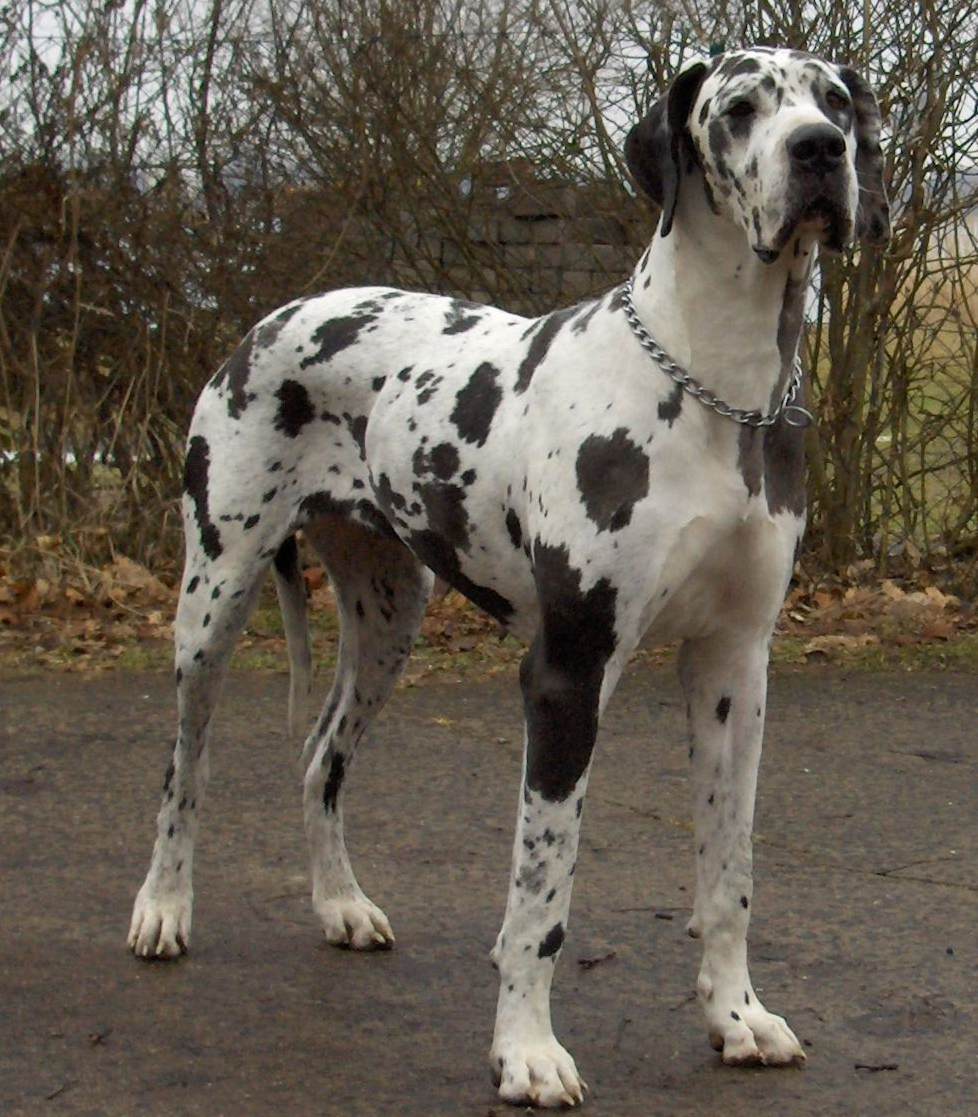
Is the Great Dane Right For You?
Great Danes have successfully transitioned from their previous purpose to their modern occupation as family pets. These dogs have consistent, well-balanced personalities. They are also sociable, trainable, and easy-going. Members of this breed make incredibly affectionate family members that get along great with children and other pets. Although they are quite affectionate, Great Danes’ large size alone makes them a questionable choice for households that contain very young children. After all, their attempts to shower the kids in their families with doggy kisses could easily result in unintentional falls.
In 5 Words
- Devoted
- Gentle
- Confident
- Reserved
- Friendly
Characteristics
Learn About the Great Dane
Description
General Description
As their name would imply, Great Dane are large dogs. They have strong, square-shaped bodies that allow them to move with a quick and powerful gait.. Rectangular heads, wide muzzles, and arched necks can all be found on members of this breed. These dogs typically have black noses but this feature can also be bluish black or dotted with black markings, depending on an individual’s coat coloring. Great Danes have dark, medium sized eyes. Their high set ears can be left in their natural state or cropped in countries where the practice isn’t illegal. Ears that remain uncropped will fold forward and lie close to the animal’s cheeks. If a dog’s ears are cropped, these appendages will stand upright and be large in comparison with the rest of their head. All Great Danes have high set tails that taper to a point. Members of this breed additionally possess straight front legs, rounded feet, dark nails, and dewclaws that may be removed if their owners wish to do so.
Size
According to breed standards, male Great Danes should stand at least 30 inches (76 centimeters) in height and their female contemporaries should be at least 28 inches (71 centimeters) tall as well. On average, male dogs of this breed will weigh around 120 pounds (54 kilograms) and female of this breed will weigh around 100 pounds (45 kilograms).
Coat
Great Danes have a short but thick coat. Their fur is smooth to the touch and glossy in texture. Acceptable colors for members of this breed include blue, black, fawn, brindle, and harlequin. Chocolate and merle coats may also be present on these dogs but neither of these hues is acceptable for show animals.
Short History of the Great Dane
Despite their name, Great Danes are originally from Germany where they first appeared during the 14th century. Members of this breed are thought to be a cross between an ancient dog variety of war dog called the Molossus and the more modern Greyhounds. The newly created dogs were used to catch prey such as wild boars and guard the estates of their owners. However, it is unknown how the term “Great Danes” came about. Germans and Brits called the dogs by the names Deutsche Dogges and German Boarhounds, respectively. All the same, the American Kennel Club (AKC) recognized the breed in 1887 as part of their working group so the odd name was certainly in use by then. Standards were formulated by the Great Dane Club in Germany as early as 1891. Eight years later, the Great Dane Club of America was formed. Members of this breed continue to be popular in the States to this day. In fact, Great Danes are currently the 15th most popular dog registered with the American Kennel Club.
Temperament
Although they were used to chase ferocious boars in the past, Great Danes have successfully transitioned from their previous purpose to their modern occupation as family pets. These dogs have consistent, well-balanced personalities. They are also sociable, trainable, and easy-going. Members of this breed make incredibly affectionate family members that get along great with children and other pets. Although they are quite affectionate, Great Danes’ large size alone makes them a questionable choice for households that contain very young children. After all, their attempts to shower the kids in their families with doggy kisses could easily result in unintentional falls.
Caring for Your Great Dane
General Health
Born in litters of 14 puppies, Great Danes have an average lifespan of 6 to 8 years.. As is the case with most large breeds, these dogs have slow metabolisms that cause them to be more lethargic and eat far less than people expect. Members of this breed have also been known to have problems with bloat. Therefore, they should eat multiple small meals per day to avoid this particular ailment. Hip dysplasia, dilated cardiomyopathy, and various heart diseases also make regular appearances in members of this breed. Great Danes that carry the merle gene are additionally susceptible to deafness and various problems with their eyesight.
Care
Daily
Great Danes are a moderately active breed and, like all dogs, they will definitely need a daily workout session. A walk around the neighborhood is the best way to accomplish this. Of course, many Great Danes successfully compete in a wide variety of dog sports and conformation shows, which is another good way for members of this breed to get some much needed exercise.
Weekly
Great Danes shed an average amount of fur but don’t need to be groomed all that often. A once weekly brushing is sufficient to keep households from being inundated with hair. It’s also a good idea to clean a dog’s teeth a few times a week to prevent otherwise avoidable health problems.
Monthly
Owners should give their dogs’ parasite prevention medicine on a regular basis. These products are typically administered once a month.
Grooming & Bathing
These dogs go through periods of heavy shedding twice a year. At such times, they will need to groomed more often than usual. Great Danes only have to be bathed when they get dirty, but these dogs can be washed as often as their owner desires as long as mild shampoo is used. Pet owners will also want to keep their dog’s toenails trimmed to prevent injuries. It is additionally recommended that Great Danes have their ears cleaned on a regular basis using a vet approved product.
Exercise & Training
Despite the fact that Great Danes are thought to have only average intelligence, they quickly master basic commands and house training principals. These dogs can reach the size of a 14 year old human in one year and should therefore start their training as soon as possible. Members of this breed will benefit from consistent rules, a firm hand, and lavish praise. After all, Great Danes have a strong desire to please their human owners. However, members of this breed should not be allowed to roam freely about the house until their owners are assured that the dog in question can behave appropriately without constant supervision. Great Danes can be quite destructive when the mood strikes them but they are not hardy enough to live outdoors full time. Therefore, crate training is highly recommended for members of this breed.

